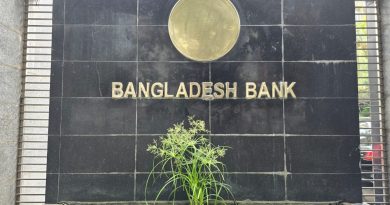Regional Economic Analysis
Bangladesh’s banking sector deposit growth fell to 8.21% year-on-year in April 2025, down from 8.51% in March, marking the seventh consecutive month of single-digit growth. This persistent trend—with deposits at Tk 18.2 trillion ($155 billion)—reflects broader regional challenges impacting South Asia’s financial stability .
Regional Drivers of the Liquidity Crunch
- Inflation’s Erosion of Savings
Bangladesh’s inflation has remained above 9% for over 2.5 years, forcing households to divert income toward essentials rather than savings. Similar pressures grip Pakistan (24% inflation) and Sri Lanka (8.5%), compressing disposable income across the region . - Capital Flight via Informal Channels
Bangladesh Bank Governor Ahsan H Mansur identifies “hundi” networks (unofficial remittance channels) as a key drain on liquidity, diverting funds from formal banking systems. This mirrors India’s struggles with unregulated cash flows, where loan-to-deposit ratios now exceed 80%, straining credit capacity . - Credit Growth Stagnation
Weak private-sector borrowing persists:
- Bangladesh’s credit growth: 7.57% (below the 10% target)
- India’s corporate loan demand slowed despite rate cuts
Reduced lending starves deposit creation, as loan disbursements typically recycle into bank accounts .
Structural Vulnerabilities Exposed
- Islamic Banking Shock: Rumors of Shariah-based bank closures triggered panic withdrawals in Bangladesh, highlighting regulatory trust deficits .
- Employment and Income Weakness: Rising unemployment curtails savings capacity—a concern echoed in Nepal and Sri Lanka, where youth joblessness exceeds 20% .
- Shift to Government Securities: Banks are parking funds in treasury bills (yielding 11.5–13%) instead of lending, prioritizing safety over economic stimulus—a trend accelerating in India and Pakistan .
Comparative Deposit Growth in South Asia (April-May 2025)
Table: Liquidity Trends Across Major Economies
| Country | Deposit Growth | Key Pressure Points |
|---|---|---|
| Bangladesh | 8.21% | Inflation (9.3%), capital flight |
| India | 10.9% (Q4 2024) | Tight loan-to-deposit ratios (80%+) |
| Pakistan | ~7.0% (est.) | Currency volatility, political unrest |
| Sri Lanka | 5.5% (est.) | Debt restructuring, IMF austerity |
| Nepal | 14.7% | Remittance surge (offsetting local weakness) |
*Sources: CEIC Data , Bangladesh Bank , S&P Global *
Policy Responses and Regional Outlook
Bangladesh’s central bank is pursuing reforms to stabilize weak banks and incentivize remittances through formal channels. Meanwhile, India’s push to include sovereign bonds in global indices aims to ease wholesale funding access . Yet challenges persist:
“When money exits banking systems via hundi, it cripples liquidity no matter how high deposit rates climb.”
— Syed Mahbubur Rahman, CEO, Mutual Trust Bank
Near-term projections: Deposit growth may rebound if inflation cools and remittances rise, but South Asia’s structural reforms—combating informality, strengthening bank governance, and stimulating job creation—remain critical for sustained recovery .
Data sourced from Bangladesh Bank, CEIC, S&P Global Market Intelligence, and Deloitte Insights (April–May 2025).






